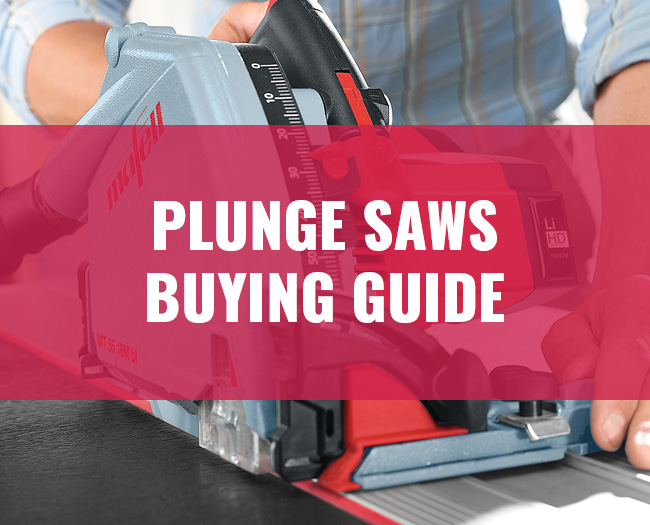A plunge saw (or track saw) is a power tool, very similar to a ‘circular saw’ designed to make straight cuts and more often than not used in conjunction with a ‘track’ or ‘guide’.
Why buy a Plunge Saw?
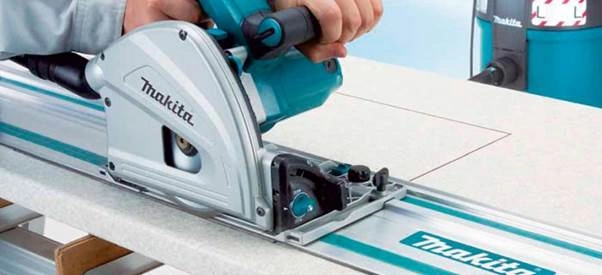
We know plenty of people see plunge saws and think, “I’ve already got a circular saw, or a table saw and a straight edge, why do I need to spend another £200+ on a plunge saw?” So why is it these tools are becoming more and more popular, and are already a standard in Europe?
Well a plunge saw specialises in accurate and SMOOTH cuts which is why so many tradesman find it an invaluable bit of kit. I’ll put it out there and say that the vast majority of circular or table saws won’t be able to replicate the quality of finish that a plunge saw can offer.
Another benefit over a circular saw is that unlike a circular the plunge saw doesn’t have a blade guard to contend with and on most models the riving knife follows the blade, reducing the amount of kick back produced by the saw. This allows your to ‘Plunge into material wherever you want to without having to start on an edge. It also makes the process of cutting far simpler and the finish far smoother.
What you set is what you get!

As with all tools there are different models to suit most budgets, and although it’s the same with plunge saws, I can safely say that they all offer an incredible amount of adjustable settings so the user can dictate their cut with an incredible level of accuracy. If you were to purchase one of these saws, you’d have a depth stop, and depth gauge and front and rear bevel capability with locking features. That’s the great thing about a plunge saw, what you set is what you get!
Using a plunge saw and guide rail
As mentioned above a plunge saw is ideally used in conjunction with a guide rail (otherwise known as a track) which gives the saw a straight line to cut along and keeps the saw still, steady and straight.
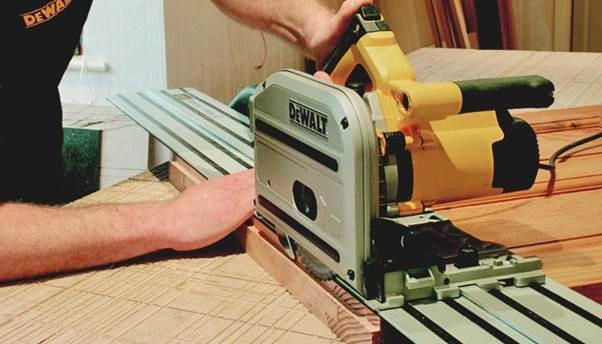
Using the plunge saw on a guide rail allows you to cut a dead straight line in no time at all. Once the rail is set up along the line of cut, simply attach your saw to the rail and away you go. Also, because your saw will be tightly held into the rail, there isn’t going to be any jarring or inaccuracy in your cut just follow the guide with no wobble.
Once you’ve set your rail and your saw as above, you’ll be able to keep those settings (angle of saw, line of cut etc) and repeat the cut over and over again with pin point accuracy – this comes in handy if you’re cutting identical doors, frames or surfaces for a long period of time. Alternatively, it takes a simple, quick adjustment of the guide rail settings and you can alter your cuts.
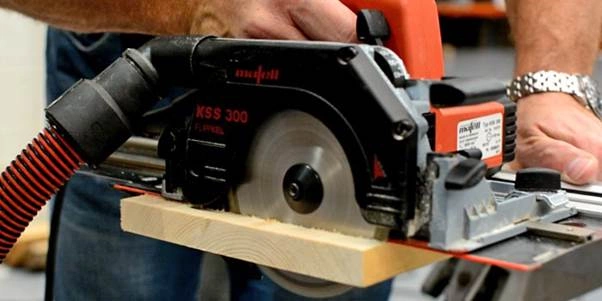
Cut without clamps:
The guide rails all come with rubberised strips along the bottom. This means that in most (but not all) situations the rail isn’t going to slip, so you don’t need to waste time clamping all your materials down; just set up your rail and away you go. Obviously, we recommend testing just how slip-free a surface is before cutting on it.
Dust extraction:
Plunge saws all come with a 30-40mm dust extraction port which means that you can fit an extractor to it. Now unlike most tools that blow sawdust around all over the place, a plunge saw actually kicks out all its dust in pretty much the same direction, making it fairly easy for an extractor to collect the majority of the dust generated.
Speed of set up:
If you’ve decided not to use clamps, then set up is complete in a matter of seconds. Just align your track with your ready-made marks on the material and you’re ready to cut! There’s no need for tests, guessing or double checking. You can cut over and over again without fear of making a mistake (please don’t try to test this rule).
Cut on site, reducing required space:
If you’re using a plunge saw over a table saw, it means that you can cut in a far smaller space. When using a table saw you’ll need infeed or outfeed space for your material. However, because a plunge saw will slice into your material whilst in situ there’s no need for that additional room.
It’ll also save room in your van/garage/shed!
Connect tracks – to infinity and beyond
The beauty of guide rails is that they have a squared end and a symmetrical design, allowing one to be easily linked to another (as long as they are the same brand of rail) via a ‘connector piece’. This means that you can join rails together time after time allowing you to cut an accurate, straight line from 1m to 100m if you really needed to!
A Cut Above:
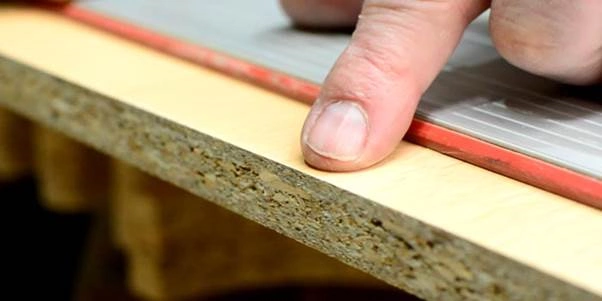
Saving the best till last, the real reason to get yourself a plunge saw, is, as I alluded to early ,the shear quality of the cut it gives you! From MDF, to plywood, to solid timber or even melamine a plunge saw delivers the best in class cut quality when compared to circular or tables saws. In most cases it’s nigh-on perfect with no splinters and barely any waste or chips. The top surface will be virtually flawless and take no time at all to achieve.
I hope that gives you an idea of why Plunge Saws are becoming one of the most popular power tools in the UK market.
Let us know of your experiences with plunge saws! Or are you in two minds about getting one? Comment below and share this article via the social buttons.

